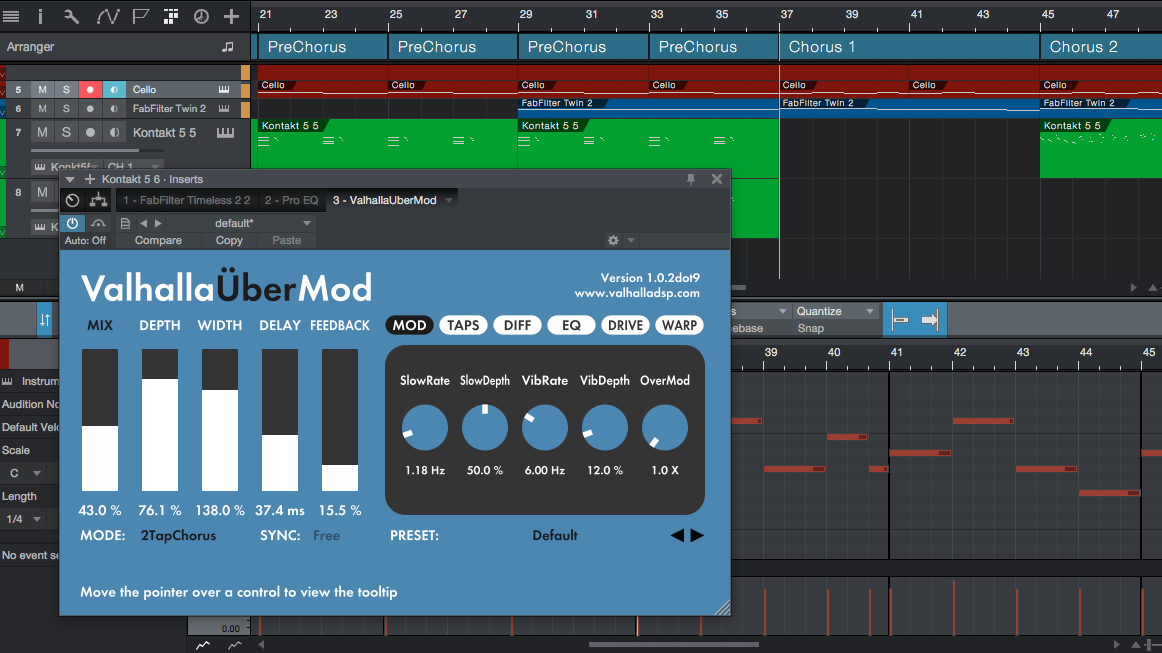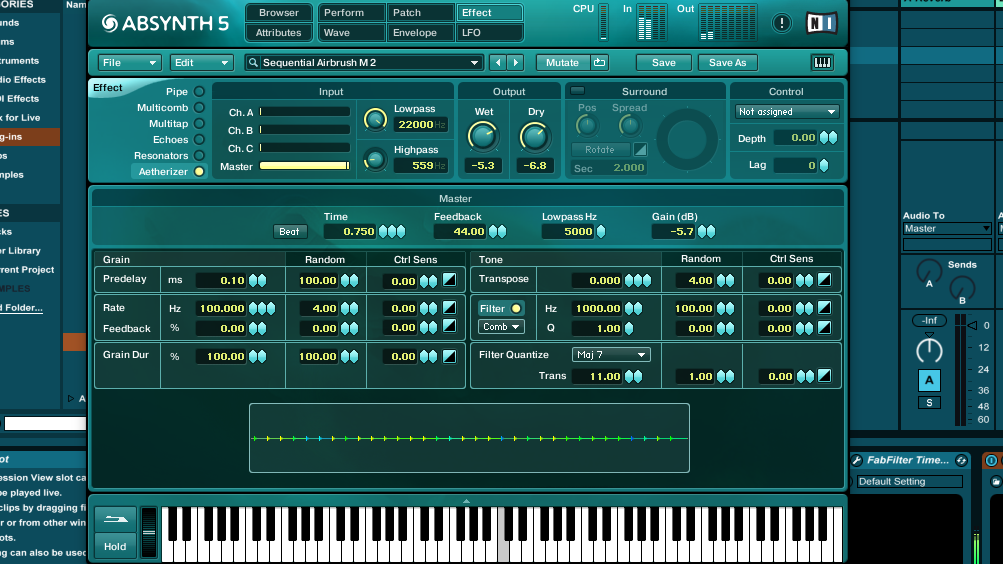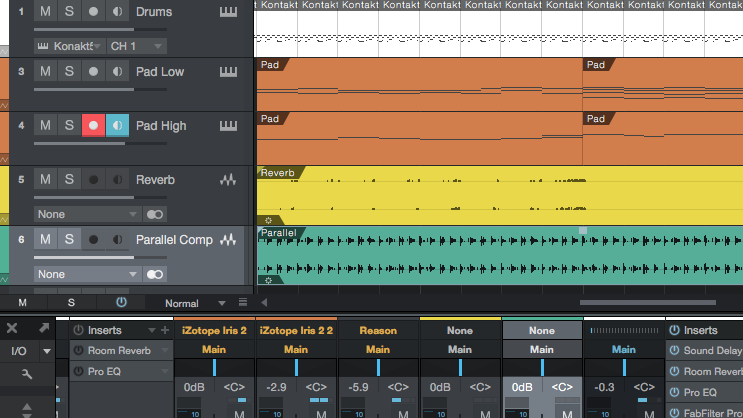8 ways to add atmosphere and ambience to your music
Make your tunes deeper than ever with these eight production techniques

Why is everyone always telling you to 'keep it simple'? Spelling your musical ideas out in basic terms is all well and good in many areas of production, but it's not the be-all and end-all of production techniques.
Sometimes you have to go deeper, providing complex textures that no one's ever heard before – sounds that can reach your listeners on a more psychological level. Having a track that people can understand easily is great, but what happens when your listener's hearing it for the twelfth time?
You need to produce a track that keeps on giving, and for that you need to go beyond the basics, providing an atmosphere that'll inspire. Here are eight things to consider when you're working on your next long-lived masterpiece.
1. Avoid using the factory bank
Don't simply rely on factory presets for your textural sounds. There are so many ways to create your own, either by processing, recording or editing, that this is one sonic area you should be using to be as original as possible.

2. Roll the dice on your patches and effects
A lot of synths, samplers and effects processors have randomising features, which can help you seek out new, unpredictable sounds to be used as textural and atmospheric layers. Find your processor's parameter randomiser, and click away until you end up with something inspirational.
Rolling the dice like this can take you to a place you'd never have got to, but you’ll probably still want to fine-tune the patch a little as required. NI's Absynth (above) – which can also be loaded as an effect – has a Mutate function that will 'evolve' your patch in an intuitive way.
Remember, if you breeze past randomised patches too quickly, you might not be able to get them back. If you find something great but not quite right, save it as a new preset!
Get the MusicRadar Newsletter
Want all the hottest music and gear news, reviews, deals, features and more, direct to your inbox? Sign up here.
3. Combine sounds and tweak their widths
When you're looking for atmosphere and ambience, stereo width is a huge factor in impressive, evolving sound design.
Layer several sounds and explore their stereo width. Create three textural layers and leave one in the middle and either autopan the other two to switch sides, or set their pan positions so that they work as a complementary pair. Not every sound in a mix can be ultra-wide, but textures and atmospheres can!
4. Make percussive and sustained sounds pop together
Adding sustained textural sounds to beat loops – vinyl crackle, tape hiss or other non-pitched, sustained sounds – can work well. But if there’s no ‘interaction’ between the parts, the power of these can be diluted. It’s the percussive nature of drum sounds which will need to be mirrored in a textural layer for it to feel like it’s being added to the drums and not to the whole track. To combine percussive and atmospheric well, try one of these two techniques…
First, send all of your drum sounds to a group which can then act as a sidechain input layer to a compressor placed on the textural sound. Doing this will cause the volume of this new sound to rise and fall in time with the beats, gluing them better to the overall drum mix.
Alternatively, render the texture as an audio file and chop it up, in time with the beats, leaving gaps where no beats play, or create a new, complementary rhythm from your edited region instead.

5. Make textures that stretch the mix 'canvas'
For a painter, the canvas is an essential part of the artistic process – it provides a blank slate, with its size and texture providing a framework for what goes on top.
Atmospheres in music are the same; they might not be the aspect the listener first ‘looks at’ and yet without them, the foundation is missing.
Look for ways to make your mix’s canvas as interesting as possible. Experiment with reverb to create three-dimensional depth. Stretch the sides with stereo width techniques. And use carefully chosen frequency content at the bottom and top to make your track feel as ‘tall’ as possible.
Again, this might not be the focal point of the track, but the deeper it is, the more details you have to keep it interesting to listeners to experience it again and again and again.
6. Inject some unpredictability
Creating textural layers in a mix is fun, but you can always go further. If your layers feel a bit too flat, you can use a filter with a random-output square or sine wave to add timbral unpredictability to a sound. You don’t need to go from super-dull to super-bright changes – just feeding a little LFO into the cutoff frequency to push tone around a little can help.
It’s up to you whether you clock this to the speed of your track. You can do similar things with volume too – Soundtoys’ Tremolator plugin is great for creating bespoke ‘rhythms’ to output ever-changing volume information, which keeps atmospheres shimmering.

7. Render your effects channels
There can be significant advantages to rendering out your auxiliary effects to become audio files in your project, rather than having them generated in real time via Aux sends. To bounce them, simply solo the Aux return channels before importing the resulting audio files onto a new audio track once they’ve been rendered.
Once you have all your effects in the project as ‘regular’ audio files, you can do anything with them: reverse them, chop them up, timestretch them, pitchshift them, turn them into samples to trigger them on the fly, re-synthesize them, throw additional effects at them… the list of possibilities is endless.
8. Create multiple sends for more spatial responses
Sending atmospheres or textural sounds to multiple reverb auxiliaries lets you add both long and short, bright and duller spatial treatments and several of these working together can add mix richness. It’s even better if these aren’t all set at the same level and, via auxiliary send levels, you can vary how much a sound is fed to any reverb at any moment.
But what if you want to drop (or boost) the level of these reverbs? It’s a good idea to automate the auxiliary return levels too. Most DAWs let you see automation data for auxiliaries alongside regular tracks, meaning you’ll always be in control of your reverb levels.
For more advice and inspiration on the art of atmosphere, pick up your print or digital copy of Future Music 316, with its huge guide to getting deeper sounds.
Future Music is the number one magazine for today's producers. Packed with technique and technology we'll help you make great new music. All-access artist interviews, in-depth gear reviews, essential production tutorials and much more. Every marvellous monthly edition features reliable reviews of the latest and greatest hardware and software technology and techniques, unparalleled advice, in-depth interviews, sensational free samples and so much more to improve the experience and outcome of your music-making.
"If I wasn't recording albums every month, multiple albums, and I wasn't playing on everyone's songs, I wouldn't need any of this”: Travis Barker reveals his production tricks and gear in a new studio tour
“My management and agent have always tried to cover my back on the road”: Neil Young just axed premium gig tickets following advice from The Cure’s Robert Smith










